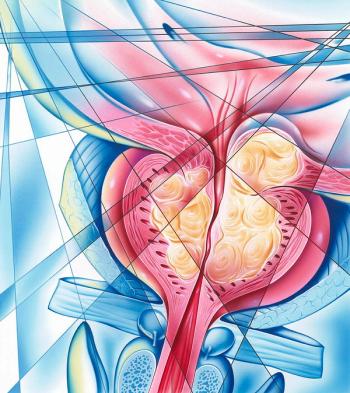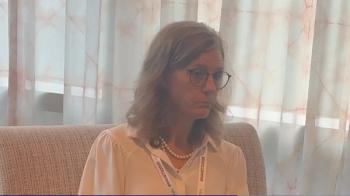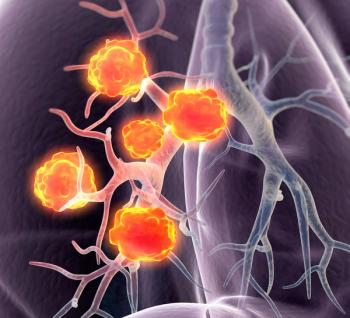
Survey reveals the general public knows little about lymphoma
The saying that “knowledge is power” holds especially true when it comes to a lymphoma diagnosis, and there are best practices for clinicians who want to fully educate their patients. Presentations at ASH 2010 offer data and advice on how to approach—and improve—education efforts among clinicians and patients.
Results of a U.S. survey have found significant gaps in the public’s understanding of lymphoma. Commissioned by the Lymphoma Research Foundation, the online survey of 1,000 participants revealed that 86% of adults remain unaware that there are 67 different types of lymphoma, and fewer than 20% had heard of B-cell or T-cell lymphoma. But more troubling, about one-third of respondents did not characterize lymphoma as a cancer or even a blood-related disease.
Given that lymphoma is a complex disease, this lack of understanding may not be surprising, experts agreed. But it underlines the importance of individualized patient education, since many patients may have little knowledge of the disease when they are diagnosed with lymphoma.
Several papers at ASH 2010 offer data and advice on how to approach-and improve-education efforts among patients and clinicians. The saying that “knowledge is power” holds especially true when it comes to a lymphoma diagnosis, and there are best practices for clinicians who want to fully educate their patients, said Diane Blum, CEO of the Lymphoma Research Foundation (
A paper at this year’s meeting will assess the risk of treatment-related stomach cancer among Hodgkin’s lymphoma survivors (
Also, researchers in Seattle will identify the modifiable factors associated with lower adherence to preventive care practices in hematopoietic cell transplantation survivors (
Finally, a patient record study will look at current practice in diagnosis and treatment of chemotherapy-induced anemia in five European countries (
The prevalence of misdiagnosis among lymphoma patients underlines the importance of an educated patient population and public, added Bruce Cheson, MD, head of hematology and a professor of medicine at Georgetown University Hospital Lombardi Comprehensive Cancer Center in Washington DC.
“Patients with lymphoma are misdiagnosed about 60% of the time, and many are treated for months and months with antibiotics before a biopsy is performed,” said Dr. Cheson, who also serves as chair of the LRF scientific advisory board. Patients and the public need to seek out clinicians who are experts in the disease, he added. A multidisciplinary group from the U.S. will present an ASH 2010 poster on primary care referrals for suspected hematologic malignancies, focusing on incidence and factors that affect the choice of specialist as well as the flow of referral information (
In the LRF survey, about 90% of respondents said if they were diagnosed with lymphoma, they would primarily consult their doctors to get more information about their disease. But more than 75% said they would use the Internet for information.
“I think the fact that many people seem to rely on their healthcare team for information is a very good thing,” said John Sweetenham, MD, FRCP, a professor of medicine and vice chair for clinical research at the Cleveland Clinic Taussig Cancer Institute. Part of good patient education may also consist of telling patients that health information on the Internet can be a mixed blessing, Dr. Sweetenham noted. An ASH 2010 poster will reveal the first report and results from
Leslie Popplewell, MD, FACP, of the City of Hope Medical Center in Duarte, Calif., warns her patients about information overload. “By the time people come to see me, they have already received their diagnosis, and many have already started to get some information from the Internet,” said Dr. Popplewell, a clinical associate professor in the department of hematology. “While reliable Web sites can be a good way to get preliminary information, it’s very easy to get lost and miss the big picture,” she said. Information on the Web may not necessarily apply to an individual patient’s specific disease or characteristics, she added.
A number of presentations at ASH 2010 will delve into the issue of how patient demographics influence treatment. One poster assesses the disease characteristics and patterns of care in elderly patients with follicular lymphoma in the U.S., asking and answering the question: Are older patients treated differently? (
Also, Russian researchers offer a new symptom assessment tool for patients with malignant lymphomas (abstract 2561), and investigators from Alabama examine racial disparities in the presentation and treatment of patients with diffuse large B-cell lymphoma (
Finally, Susan E. Bates, MD, from the medical oncology branch at the National Cancer Institute, will discuss epigenetic modulation and therapy of lymphoid malignancies. She will explain the mechanisms of action of four FDA-approved therapies-azacitidine (Vidaza), decitabine (Dacogen), vorinostat (Zolinza), and romidepsin (Istodax)-that benefit a certain subset of patients (
Enhanced patient education may also mean addressing cultural, social, and language barriers, said Alex Preti, MD, clinical associate professor at Baylor College of Medicine and medical director of the oncology unit at the Methodist Hospital in Houston. For non-native English speakers, a translator could prove helpful, he said. An ASH paper by Cleveland-based investigators will share the results of a prospective trial looking at the positive effect of inpatient care partners during allogeneic bone marrow transplantation (
Also, clinicians should keep ethnic customs and religious backgrounds in mind. Although not specific to lymphoma, an ASH presentation will share the result of a randomized controlled trial of spiritually focused meditation in patients with newly diagnosed acute leukemia (
“Patients who are from different socioeconomic and cultural backgrounds may need you to go slower when unfolding information for them,” Dr. Preti said. “But at the end of the day, we really want all our patients, as well as their families, to fully understand their disease. We want them to understand the risks and benefits of different treatments. They benefit from being an active participant in their treatment.”
Additional reporting by Shalmali Pal.
Newsletter
Stay up to date on recent advances in the multidisciplinary approach to cancer.



















































































